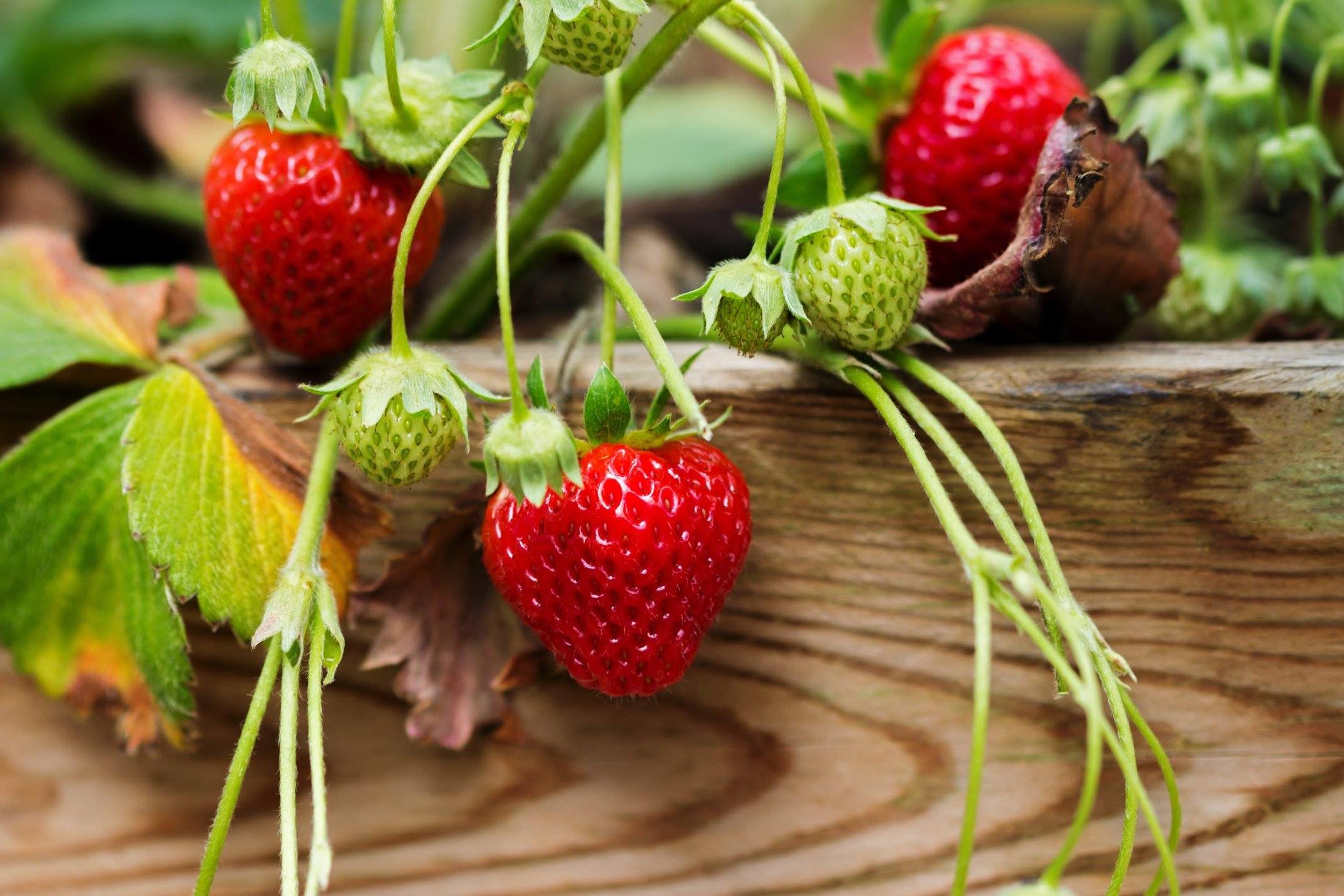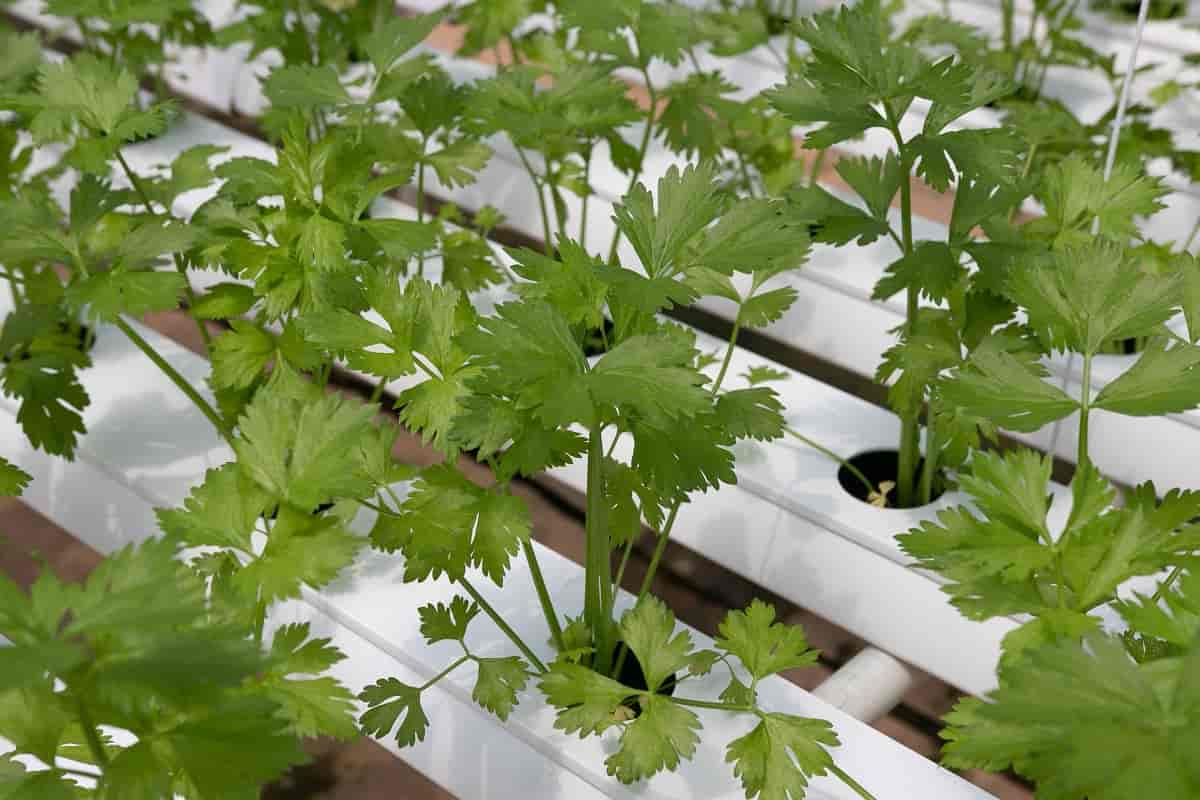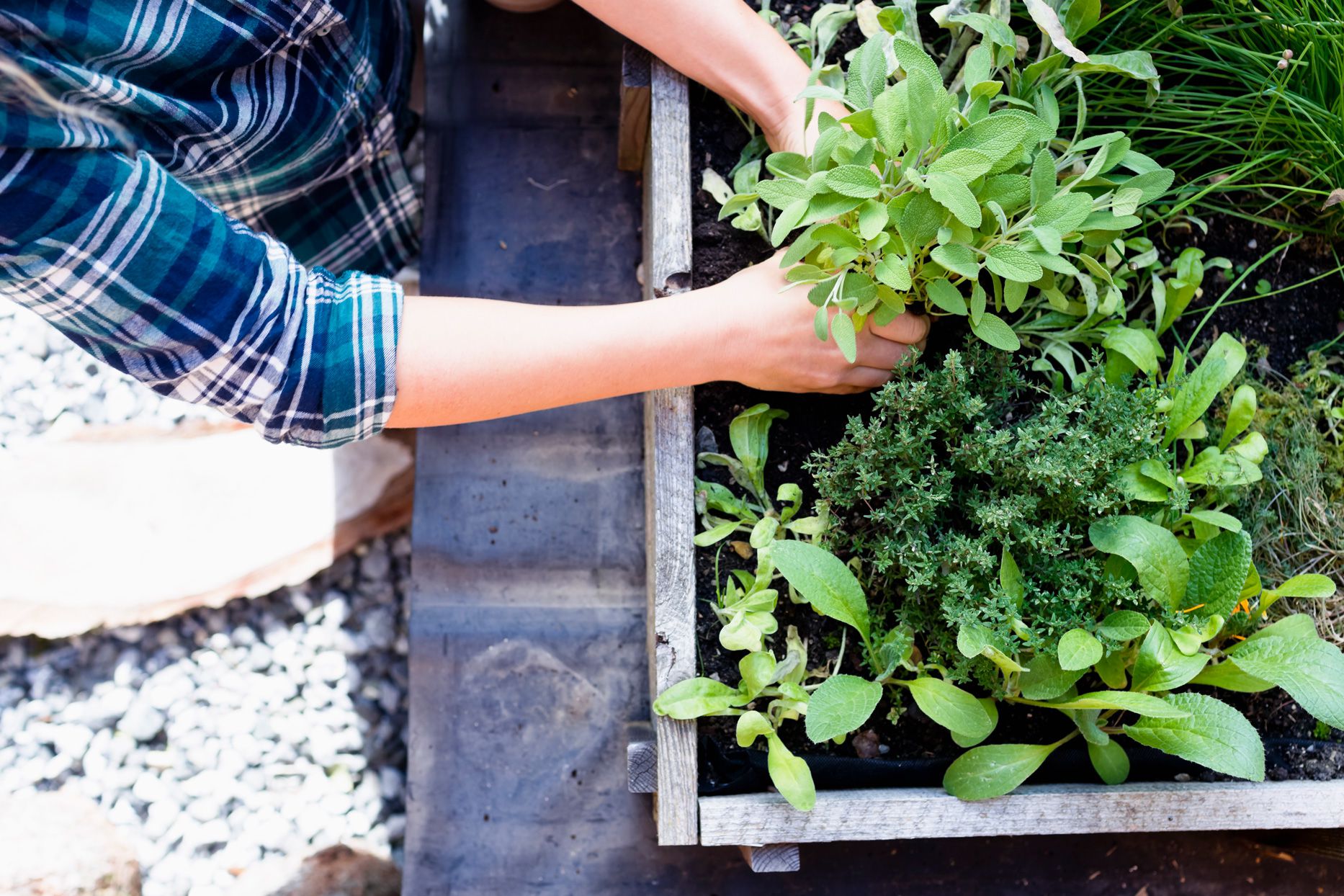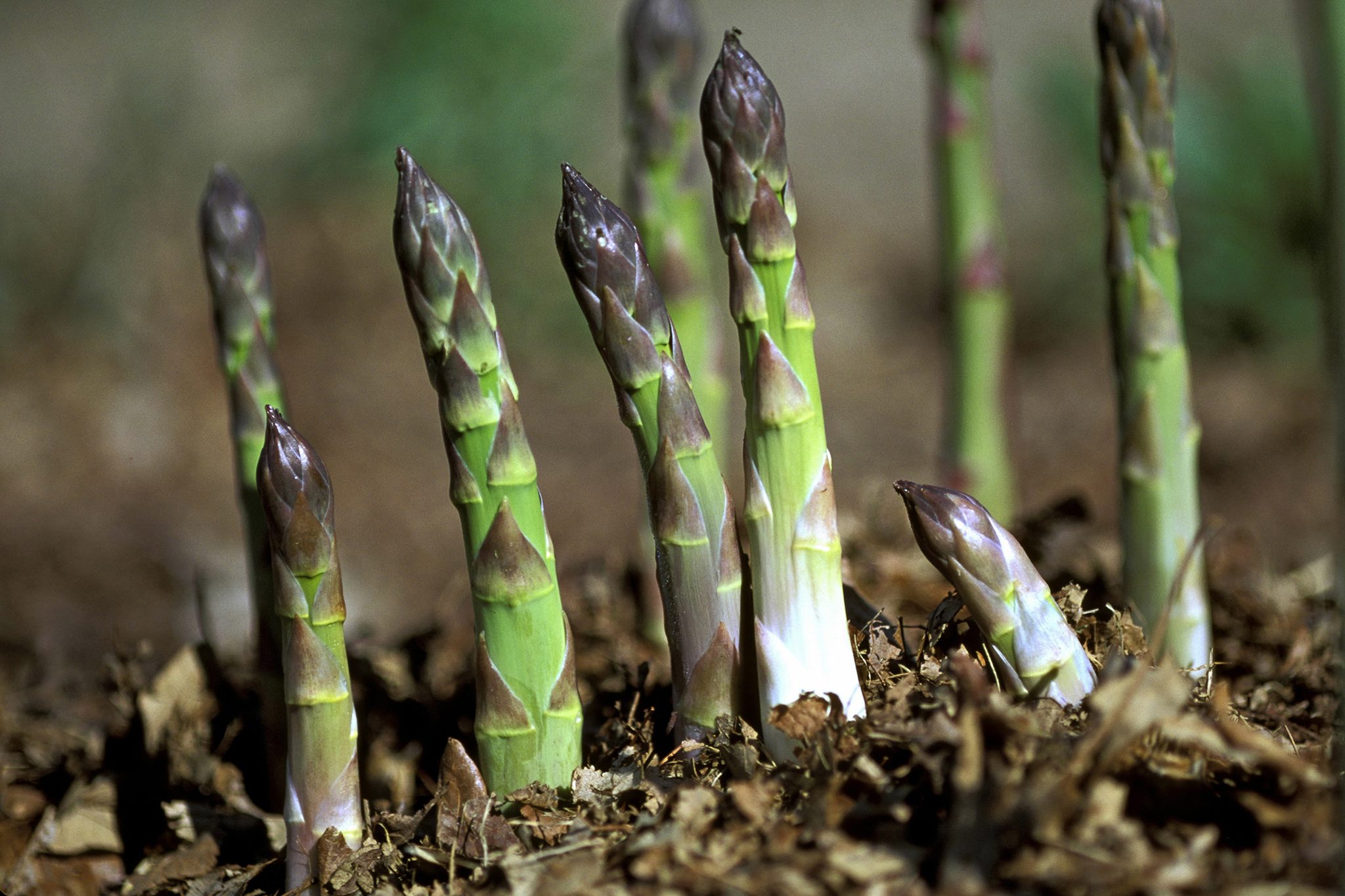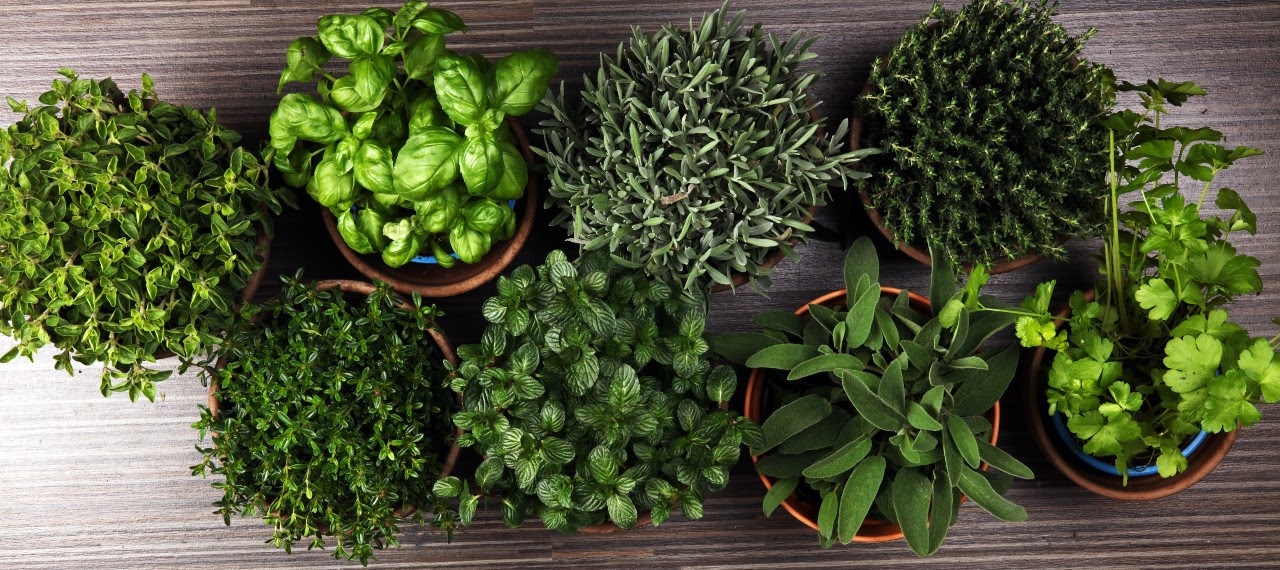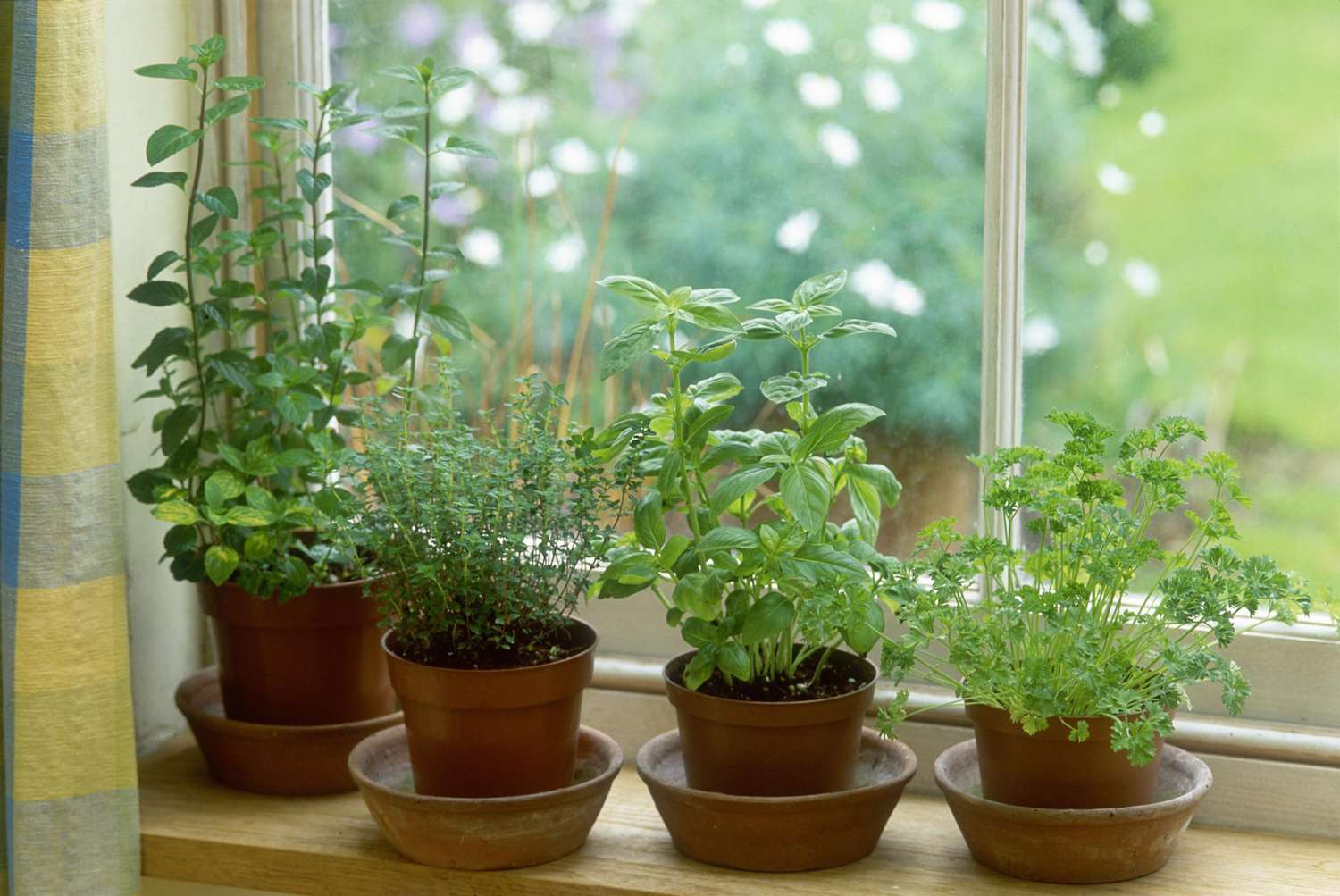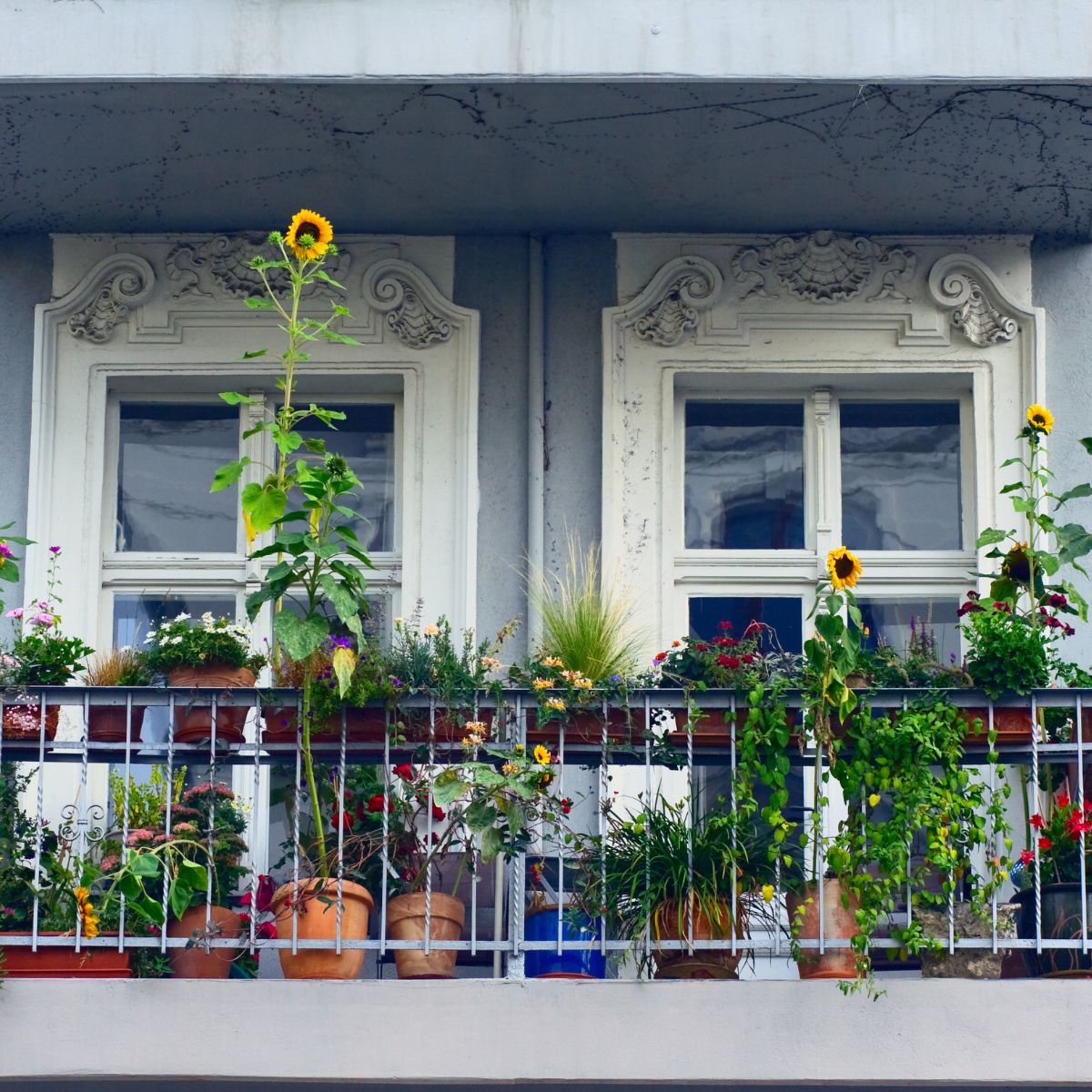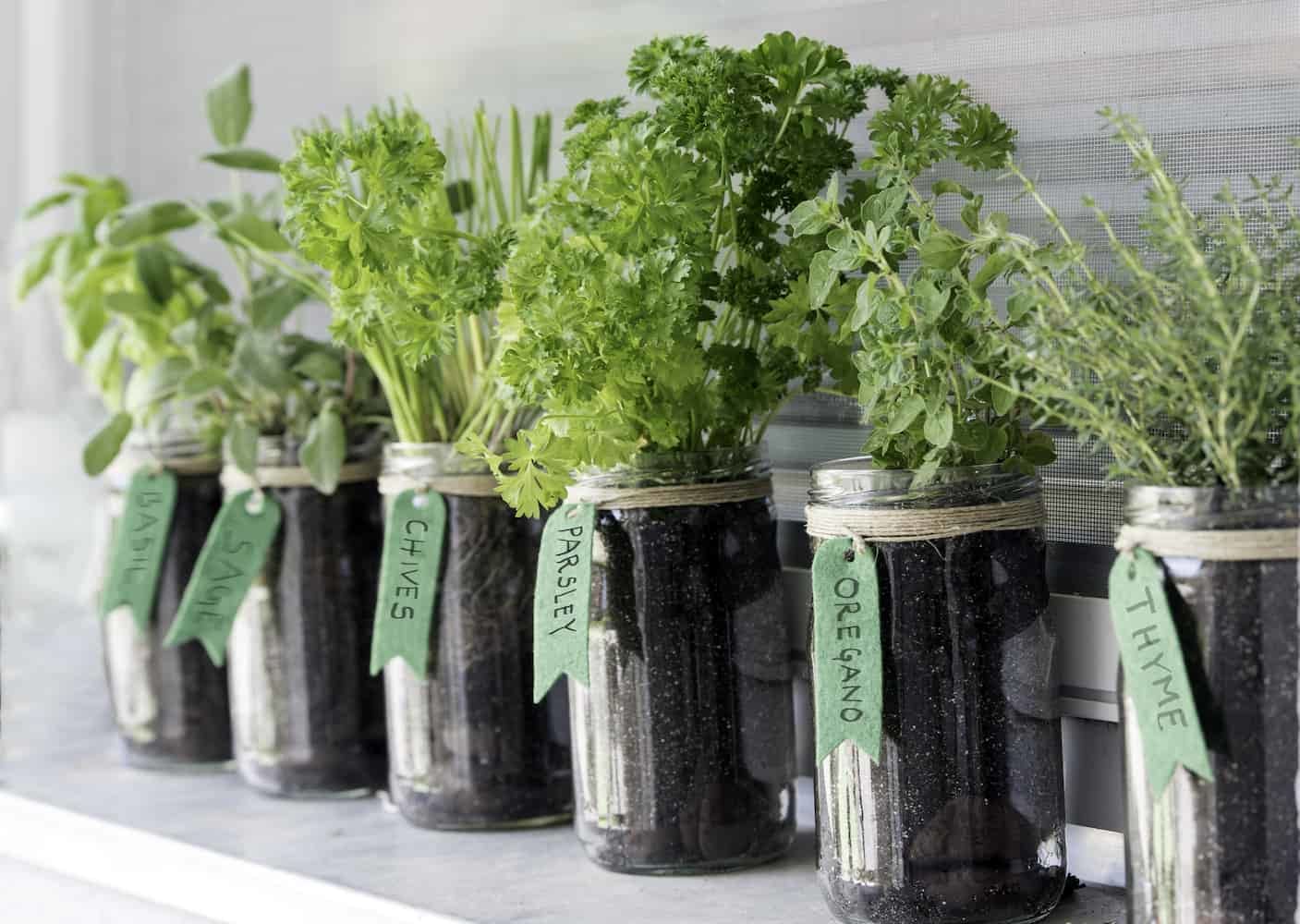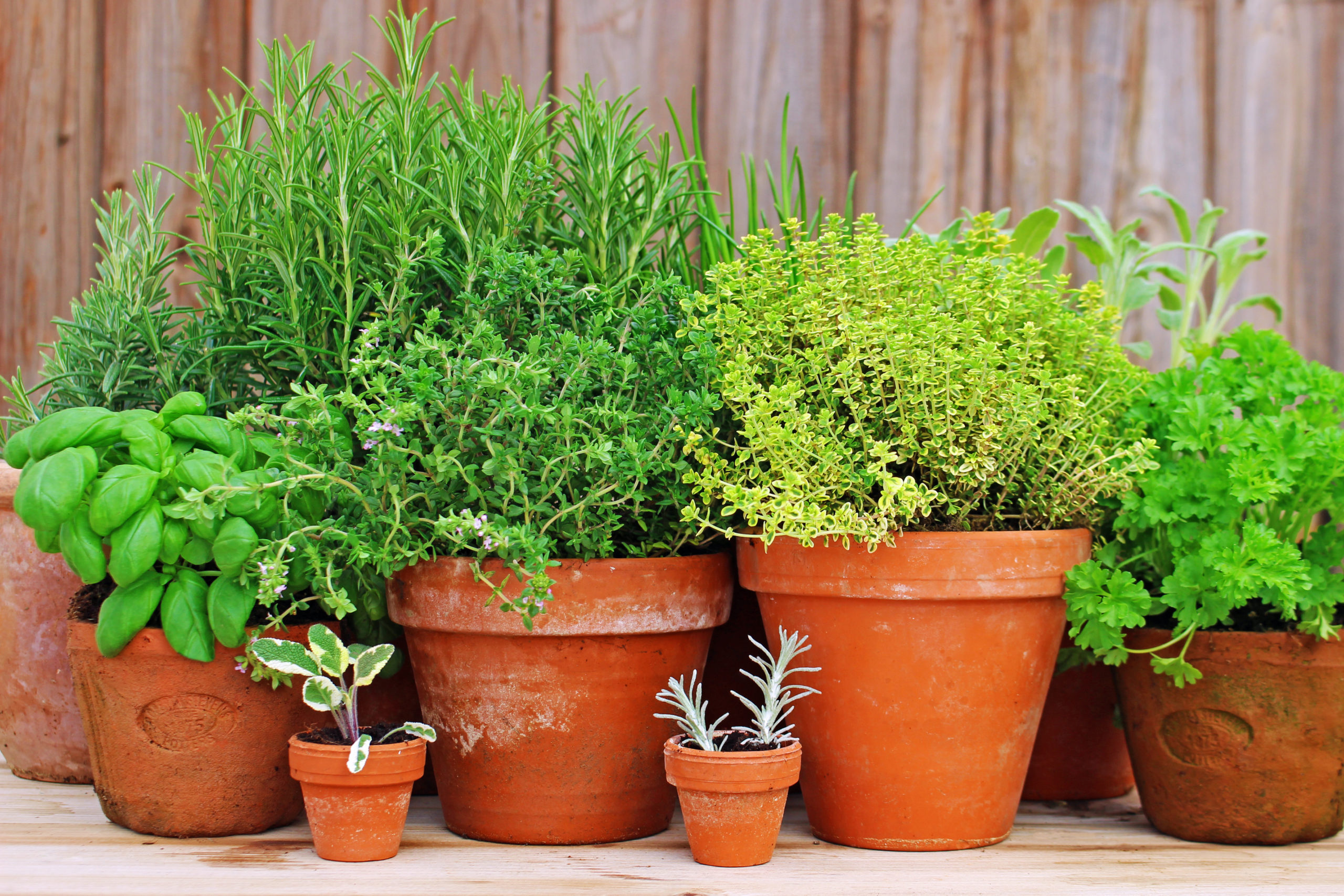Home>Types of Gardening>Edible Gardening>How To Grow Herbs Indoors Year Round
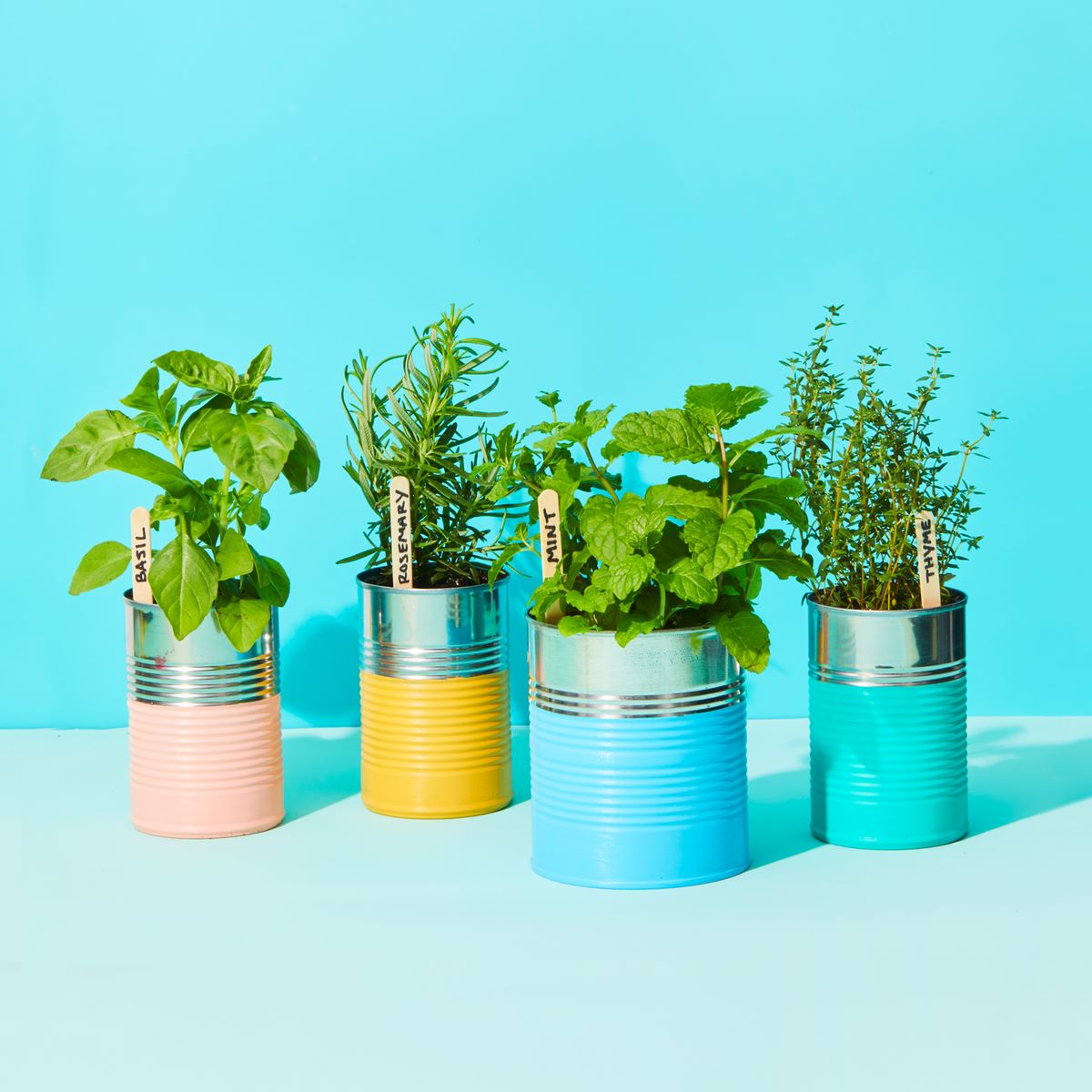

Edible Gardening
How To Grow Herbs Indoors Year Round
Modified: January 22, 2024
Learn the secrets of successful edible gardening and discover how to grow herbs indoors year-round with our expert tips and guidance.
(Many of the links in this article redirect to a specific reviewed product. Your purchase of these products through affiliate links helps to generate commission for Chicagolandgardening.com, at no extra cost. Learn more)
Table of Contents
Introduction
Welcome to the wonderful world of edible gardening! Growing herbs indoors year-round allows you to have fresh, flavorful additions to your meals regardless of the season. Whether you have a spacious kitchen or a small apartment, indoor herb gardening is a rewarding and satisfying endeavor that brings the joys of nature indoors.
Not only does indoor herb gardening provide you with a readily available supply of aromatic and delicious herbs, but it also adds a touch of greenery and freshness to your living space. Imagine having the ability to pluck a few sprigs of basil or mint right from your windowsill to garnish your dishes or infuse your beverages.
But where do you start? How do you ensure that your herbs thrive in an indoor environment? Fear not, for we are here to guide you through the process every step of the way.
In this comprehensive guide, we will explore the essential aspects of indoor herb gardening, including selecting the right herbs, choosing appropriate containers, providing adequate lighting, maintaining optimal temperature and humidity levels, watering and fertilizing, pruning and harvesting, dealing with pests and diseases, and troubleshooting common issues.
Whether you are a seasoned gardener or just starting out, this guide will equip you with the knowledge and skills to cultivate a thriving indoor herb garden that will provide you with a bountiful supply of fresh herbs throughout the year.
So, roll up your sleeves, grab your gardening tools, and let’s embark on this exciting edible gardening journey together!
Choosing the Right Herbs
When it comes to indoor herb gardening, choosing the right herbs is crucial for success. Not all herbs thrive in an indoor environment, so it’s important to select varieties that are well-suited for growing indoors.
First and foremost, consider herbs that you frequently use in your cooking. This way, you can enjoy the flavors and aromas of your favorite herbs throughout the year. Popular culinary herbs such as basil, parsley, thyme, rosemary, and mint are excellent choices for indoor gardening.
Another factor to consider is the size and growth habit of the herbs. Some herbs, like mint and oregano, can spread quickly and may require larger containers or regular pruning to keep them in check. On the other hand, herbs like chives and thyme have a more compact growth habit, making them suitable for smaller herb gardens or windowsill planters.
Furthermore, take into account the amount of natural light your indoor space receives. If you have a sunny south-facing window, you can grow a wide variety of herbs. However, if your space is limited in terms of natural light, consider herbs that are more tolerant of low light conditions, such as parsley or cilantro.
Lastly, consider the overall maintenance requirements of the herbs. Some herbs, like basil, require regular pinching back of the flowers to promote bushier growth and prevent them from going to seed too quickly. Others, like rosemary, have a more hands-off approach and require minimal pruning.
With careful consideration of your culinary preferences, growth habit, available light, and maintenance requirements, you can choose the right herbs that will thrive in your indoor garden.
Remember, cultivating your own herbs indoors not only allows you to enjoy fresh flavors, but it also provides a sense of satisfaction and connection to nature. So go ahead and select the herbs that will elevate your culinary creations to new heights!
Selecting Containers
Choosing the right containers for your indoor herb garden is essential for the well-being and growth of your plants. When it comes to selecting containers, there are a few factors to consider.
Firstly, ensure that your chosen containers have good drainage. Herbs don’t like to sit in waterlogged soil, so it’s important to select pots or containers with drainage holes at the bottom. This allows excess water to drain away, preventing the roots from becoming waterlogged and susceptible to rot.
Additionally, consider the size of the containers. Most herbs have relatively shallow root systems, so a container with a depth of around 6-8 inches is typically sufficient. However, herbs like mint and rosemary may benefit from deeper containers to accommodate their spreading growth habit.
Material-wise, there are various options available. Clay or terracotta pots are popular choices as they are porous and allow for proper airflow and water drainage. They also provide some insulation to the roots. However, they can dry out more quickly, so keep an eye on the moisture levels of the soil.
Alternatively, you can opt for plastic or resin containers, which are lightweight and retain moisture better. They are also less prone to cracking and breaking compared to clay pots. Just make sure they have drainage holes to prevent waterlogging.
Lastly, consider the aesthetics and style of the containers. Indoor herb gardening is not only functional but can also be visually appealing, adding a touch of greenery to your home. Choose containers that complement your decor and personal style, whether it’s sleek and minimalist or rustic and charming.
Remember, selecting the right containers is crucial for the overall health and success of your indoor herb garden. Take into consideration drainage, size, material, and aesthetics in order to provide an ideal growing environment for your herbs.
Now that you’ve chosen the perfect containers, it’s time to move on to the next step of indoor herb gardening: providing proper lighting.
Providing Proper Lighting
Proper lighting is vital for the successful growth of your indoor herb garden. Since herbs typically require at least 6-8 hours of sunlight a day, it’s important to consider the lighting conditions in your indoor space.
If you have access to a sunny south-facing window, that can be an ideal location for your herbs. Place the containers near the window to maximize the amount of natural light they receive. Rotate the pots occasionally to ensure that all sides of the plants receive equal exposure.
However, not all indoor spaces have access to abundant natural light. In such cases, you can supplement the light with artificial sources. LED grow lights are a popular choice for indoor herb gardening as they provide the necessary full spectrum of light that plants need for photosynthesis. Position the lights a few inches above the plants and adjust the height as the herbs grow taller.
When it comes to the duration of light exposure, herbs generally require around 12-16 hours of light each day. You can use timers to ensure the consistency of the lighting schedule and to mimic natural day and night cycles.
It’s important to note that different herbs may have specific light requirements. For instance, herbs like basil and parsley prefer brighter light, while herbs like mint and cilantro can tolerate slightly lower light levels. Be sure to research the specific lighting needs of the herbs you are growing and adjust accordingly.
Remember, proper lighting is crucial for the photosynthesis process, which helps your herbs produce energy for growth and develop their essential oils, flavors, and aromas. By providing adequate lighting, you’re setting your indoor herb garden up for success.
Now that we’ve tackled the lighting aspect, let’s move on to maintaining the optimal temperature and humidity levels for your indoor herb garden.
Maintaining Optimal Temperature and Humidity Levels
Maintaining the right temperature and humidity levels is crucial for the health and growth of your indoor herb garden. Different herbs have varying temperature requirements, but in general, most herbs thrive in temperatures between 60-75°F (15-24°C).
Avoid placing your herbs in drafty areas or near heat sources such as radiators or vents, as extreme temperature fluctuations can adversely affect their growth. Aim for a location with consistent temperatures, away from cold drafts and excessive heat.
Additionally, humidity plays an important role in the well-being of your herbs. Most herbs prefer moderate humidity levels, around 40-60%. However, indoor environments tend to be drier, especially during the winter months when the heating is on.
To increase humidity levels around your herbs, you have a few options. One simple method is to place a tray filled with water near your herbs. As the water evaporates, it increases the humidity in the surrounding area. You can also mist your herbs lightly with water using a spray bottle, especially during dry spells.
If you find that the humidity levels are consistently low, consider using a humidifier in the room to provide a more stable and suitable environment for your herbs. This can help prevent issues such as dry and crispy leaves.
On the other hand, if your indoor space is naturally humid, it’s important to provide proper air circulation to avoid excessive moisture around the plants, which can lead to fungal diseases. Use fans or open windows periodically to ensure proper airflow.
By maintaining optimal temperature and humidity levels, you create a comfortable environment for your indoor herb garden to thrive. Remember to monitor these factors regularly and make adjustments as needed to ensure the health and vitality of your herbs.
Now that we’ve covered temperature and humidity, it’s time to move on to the essential tasks of watering and fertilizing your indoor herb garden.
Watering and Fertilizing
Proper watering and fertilizing are key aspects of indoor herb gardening that contribute to the overall health and productivity of your plants.
When it comes to watering, herbs prefer a consistent level of moisture. Overwatering can lead to root rot and other fungal diseases, while underwatering can cause the plants to wilt and suffer nutrient deficiencies.
Before watering, check the moisture level of the soil by inserting your finger about an inch deep. If it feels dry, it is time to water. However, if it feels moist, wait a little longer before watering to avoid over-saturation.
When watering, ensure that the water reaches the bottom of the container, allowing the roots to absorb the moisture fully. Allow any excess water to drain away, avoiding waterlogged conditions. It’s better to water thoroughly but less frequently rather than giving small amounts of water frequently.
Fertilizing is also essential to provide your herbs with the necessary nutrients for growth and development. Use a balanced water-soluble fertilizer, specifically formulated for herbs or vegetables, following the manufacturer’s instructions.
Start fertilizing your herbs a few weeks after planting or when they start actively growing. Apply the fertilizer gently to avoid damaging the delicate roots. It’s best to fertilize your herbs every 2-4 weeks during the growing season, reducing the frequency during the winter months when growth slows down.
Remember, every herb has its own nutritional requirements, and some herbs may have specific fertilizer recommendations. Research the individual needs of the herbs you are growing to ensure you provide them with the right nutrients at the right time.
Regularly monitoring the moisture level of the soil, watering when necessary, and providing appropriate fertilization will help your herbs thrive and flourish in your indoor garden.
Next, we’ll delve into the importance of pruning and harvesting your indoor herb garden.
Pruning and Harvesting
Pruning and harvesting are essential practices for maintaining the health and productivity of your indoor herb garden. Regular pruning helps promote bushier growth, prevent leggy plants, and maintain the desired shape of your herbs.
When it comes to pruning, it’s best to start when your herbs have developed a few sets of leaves. Using clean and sharp pruning shears or scissors, trim the top portion of the plant just above a leaf node or a set of leaves. This encourages branching and stimulates new growth.
Herbs like basil and mint tend to grow quickly and may require more frequent pruning to keep them compact and prevent them from flowering too early. Pinch back the growing tips regularly to encourage bushier growth and delay the onset of flowers.
During the growing season, it’s a good idea to remove any yellowing or damaged leaves to maintain the overall health and appearance of your herbs. This also helps improve airflow and reduce the risk of diseases.
Now, let’s move on to the exciting part: harvesting! Harvesting your indoor herbs is a rewarding experience as you get to enjoy the fresh flavors and aromas in your culinary creations.
When it comes to harvesting, it’s best to do so in the morning when the herbs’ essential oils are at their peak. Use clean and sharp scissors or pruning shears to snip off the leaves or stems just above a leaf node. Avoid removing more than a third of the plant’s foliage at once to allow for continued growth.
For herbs like basil and mint, harvesting the top leaves first promotes a bushier growth habit. For herbs like parsley and cilantro, you can harvest individual leaves or stems as needed.
Remember, proper pruning and regular harvesting not only keep your indoor herb garden in a healthy state but also encourage continuous growth and abundance.
Now that we’ve covered pruning and harvesting, let’s move on to addressing pests and diseases that may affect your indoor herb garden.
Dealing with Pests and Diseases
Pests and diseases can pose a threat to the health and productivity of your indoor herb garden. It’s important to be vigilant and take appropriate measures to prevent and manage these issues effectively.
Common pests that can affect herbs include aphids, spider mites, whiteflies, and fungus gnats. Regularly inspect your plants for any signs of pest infestations, such as discolored leaves, stippling, or sticky residue on the leaves.
To control pests, you can start by gently washing your herbs with a stream of water or wiping the infested leaves with a soft cloth. For more persistent infestations, consider using organic pest control options such as insecticidal soaps or neem oil, following the manufacturer’s instructions.
In addition to pests, herbs are also susceptible to various diseases, including fungal infections like powdery mildew or root rot. To prevent diseases, ensure proper air circulation around your herbs, allowing the leaves to dry out between waterings. Avoid overwatering and overcrowding your plants, as this can create a favorable environment for disease development.
If you notice any signs of fungal infections, such as white powdery patches on the leaves, promptly remove the affected plant parts and adjust your watering practices. Organic antifungal sprays or solutions, like a mixture of baking soda and water, can also be used to control fungal diseases.
Remember to regularly monitor your herbs for pests and diseases and take swift action at the first sign of trouble. Early detection and intervention can help prevent further damage and maintain the overall health of your indoor herb garden.
Now, let’s move on to troubleshooting common issues that you may encounter while growing herbs indoors.
Troubleshooting Common Issues
While indoor herb gardening can be a rewarding endeavor, it’s not uncommon to encounter a few challenges along the way. Here are some common issues that you may face and how to troubleshoot them:
1. Yellowing leaves: Yellowing leaves can be a sign of overwatering, underwatering, or nutrient deficiencies. Check the moisture level of the soil and adjust your watering practices accordingly. Ensure your herbs are receiving adequate sunlight and consider fertilizing them with a balanced fertilizer.
2. Leggy growth: If your herbs are growing tall and leggy with long, weak stems, it’s a sign that they are not receiving enough light. Move them to a location with brighter light or consider supplementing with artificial grow lights.
3. Drooping or wilting plants: Drooping or wilting herbs can be a sign of dehydration. Check the moisture level of the soil and water as needed. Ensure proper drainage to prevent waterlogging. If the soil is consistently moist, it may indicate root rot, in which case you may need to repot your herb and adjust your watering practices.
4. Lack of growth or stunted growth: Insufficient light or nutrient deficiencies can cause slow or stunted growth in herbs. Ensure your herbs are receiving adequate light and consider fertilizing them with a balanced fertilizer to provide necessary nutrients.
5. Pest infestations: If you notice pests like aphids, spider mites, or whiteflies on your herbs, take immediate action to control the infestation. Use organic pest control methods such as insecticidal soaps or neem oil, following the manufacturer’s instructions.
6. Fungal diseases: Powdery mildew, root rot, and other fungal diseases can affect indoor herbs. Maintain proper airflow, avoid overwatering, and remove affected plant parts promptly. Consider using organic antifungal sprays or solutions to control fungal infections.
Remember, each herb may have specific needs and may require individual attention. Monitor the health and growth of your herbs regularly, make adjustments as necessary, and address any issues promptly to ensure the success of your indoor herb garden.
Now that we’ve addressed common issues, let’s wrap up our guide to indoor herb gardening.
Conclusion
Congratulations! You’ve reached the end of our comprehensive guide to indoor herb gardening. By now, you have a solid foundation and the knowledge necessary to grow your own herbs indoors year-round.
From choosing the right herbs for your culinary preferences to selecting suitable containers, providing proper lighting, and maintaining optimal temperature and humidity levels, you have learned the key factors that contribute to the success of your indoor herb garden.
We discussed the importance of watering and fertilizing your herbs correctly, as well as the benefits of pruning and harvesting to promote healthy growth and abundance.
Furthermore, we explored how to deal with common pests and diseases that can pose challenges to your indoor herb garden. By staying vigilant and taking appropriate measures, you can effectively prevent and manage these issues to ensure the overall health of your herbs.
Remember, indoor herb gardening is not only about growing fresh and flavorful herbs. It’s also a way to connect with nature, add beauty to your living space, and elevate your culinary creations with the freshest ingredients.
So, whether you have a spacious kitchen, a small apartment, or just a sunny windowsill, don’t hesitate to embark on this exciting edible gardening journey. Start with a few of your favorite herb varieties, experiment with different growing techniques, and enjoy the satisfaction of tending to your own indoor herb garden.
Thank you for joining us on this journey and happy indoor herb gardening!

